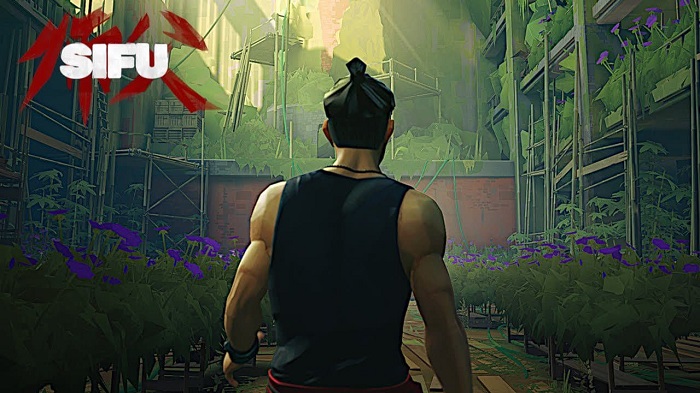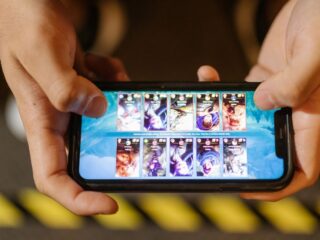
Everyone has a club. It was either the place where you learned to make friends and pick up chicks/the place your parents wouldn’t let you go or
the one that made all those late nights in high school worth it. This is an unpretentious, funny look at what happens when clubs collide.
“Sifu Preview: Rumble in the Club” is a new show that will be airing on YouTube. The show stars two retired MMA fighters as they reminisce about their glory days and talk to some of the top athletes from today’s world.
Sloclap is rapidly establishing himself as one of my favorite devs. It all began with Absolver, the studio’s debut game, which drew me in with its stylish aesthetic and smooth, if not quite realistic, fighting. And, although Absolver didn’t hit every punch right away, I thought it was — and still is — worth checking out for aficionados of the genre.
Sifu, a new beat’em up/action-adventure game from the same creators, is now on the horizon. It, like Absolver, looks fantastic in trailers. At times, the excitement of something big is tangible. Thankfully, after spending some time with a preview version, I can confidently state that Sifu isn’t only lovely to look at: it’s also a lot of fun to play!

Sifu tells the narrative of a kung fu student — ostensibly a young Pak Mei practitioner — on the hunt for a bunch of assassins who murdered his family and martial arts master. The aim is to track down these assassins in order to figure out why they assaulted his house and maybe eliminate them. Of course, saying it is easier than doing it. The assassins may be difficult to track down, are surrounded by tough fighters, and are considerably more experienced than he is. At least for the time being.
The notion of Sifu is intriguing enough. But it’s Sifu’s battle and self-resurrection mechanics that make it so appealing. The physics-based combat is intended to be as realistic as possible. Attacks with a lot of flash are fantastic, but it’s their relative nature and how they affect your surroundings that truly stands out.
On paper, the resurrection feature is similar to that in Sekiro: Shadows Die Twice, in which you may utilize a mystical necklace to revive and continue fighting immediately after dying in battle. Our anonymous protagonist in Sifu, on the other hand, becomes older with each resurrection. If you reach an advanced age before finishing your objective, the game is ended.

Before I played Sifu, I thought all of it sounded great. I gained a better idea of the game’s plot and how various gameplay features interact after spending a few hours in it. The demo build I was given begins in the second chapter’s first half. While it didn’t have all of Sloclap’s intended features, such as a tutorial, picture mode, and some progression-based components, it did include enough systems to give me a solid idea of what’s to come.
Sifu begins within a Wuguan, which seems to be a type of living area or dojo that you may visit in between tasks. A notes board emphasizes key figures and places, a window serves as a task selector, and a wooden training dummy gives you entrance to a training chamber, among other things. After spending some time in the training area familiarizing myself with the buttons and combinations, I jumped right into the available objective, an attack on The Club.
I had a lot of deaths. I was able to parry blows, string a few combos together, and even eliminate a monster in a stylistic manner. However, I died more more than I expected to before the preview build expired. The adversaries you’ll encounter in Sifu aren’t easy prey, and attacking them blindly isn’t a good idea. Waiting to parry every assault by blocking just as the enemy was about to land a strike wasn’t the best approach either. Both playing cautiously and aggressively were damaging to my efforts. I didn’t stop being pounded until I realized how Sifu combines physics and relative relationships with the surroundings.

I was much more methodical throughout my second game. I’d move about to avoid being encircled, chuck objects at foes, and dodge more — I was becoming better at controlling areas. I killed a few times, but it was more because I wasn’t acquainted with a certain enemy’s assault style, rather than because I was quickly overpowered like previously.
Knowing when and how to employ your various powers is crucial in Sifu. When foes parry, they become susceptible to follow-up strikes. Dodging cancels oncoming attacks, but it must be timed correctly, much like parrying. Blocking is also an option, but it harms your posture and makes it hard to avoid strikes for a few seconds after it’s broken. What you do during a fight is a matter of personal taste and circumstance. Parrying is dangerous, particularly when you’re surrounded, but blocking everything will get you killed far quicker.
In that way, your attacking choices are identical. Fast assaults normally soften adversaries, but slower/stronger attacks send them flying. You’ll stop for a minute if you miss an attack or if your strikes are blocked before continuing.
Items found in the environment may be tossed or kicked at enemies to knock them down and allow you to concentrate on someone else or take a breather. These identical goods, however, may be taken up by opponents, thus worsening the situation. A time-slowing concentration move may help you get out of a tight spot, but it’s limited by a focus meter that must be replenished by landing basic strikes.

The majority of what you can accomplish, Sifu’s numerous foes can do. Parrying, dodging, and utilizing objects are all examples of this. They may even try to use your skills against you. If you do enough damage to an adversary, you’ll be able to launch a strong finishing move by hitting two buttons at the same time, thus completing the battle. If an adversary parries this attack, they will develop into a more powerful version of themselves. What were formerly difficult conflicts have evolved into mini-boss battles.
That is why in Sifu, situational awareness is crucial. It’s possible to go within battle range and launch a couple punches. You can also deflect an attack, pick up a bottle, and smack a rival in the face. You may even kick them into another enemy, forcing them to tumble over a railing. However, your options are limited by the circumstances.
Because foes respond genuinely to their surroundings, you can frequently maneuver them into scenarios that benefit you or lead them to injure each other. This concept applies to all of your actions. Grabbing someone is a straightforward throw. If you grab them near to a wall, you could knock their skull against it.
After these things connected, I liked my time with Sifu. For the most part, the dynamic and imaginative approaches to fighting are engrossing. Playing Sifu is like being in a Jackie Chan movie; the freedom to utilize anything and anything to defeat adversaries keeps each combat interesting, even after many visits to the same place.
This is bolstered by the aging mechanic. Every time you die, you advance in age. Experience comes as a result of this. Your character will not only strike harder, but they will also be able to learn new techniques. You’ll resurrect as a more serious danger, with more choices at your disposal. You’ll be smaller in size (for balance), but still a formidable opponent in combat.
Combat, on the other hand, is not without flaws. Sifu, to put it another way, treats its stated norms unequally. Countering an enemy’s strike is one of my favorite things to accomplish. For example, when an opponent was ready to throw a punch, I did a leg sweep. I knocked them to the ground first, setting off a domino reaction. Another figure stumbled over the fallen corpse as he ran up behind the one I had just murdered. Instead of throwing blows, I utilized my head to dispatch two opponents in one motion. It was fantastic. Unfortunately, some telegraphed maneuvers aren’t compatible with this strategy.

Some opponent strikes are so strong that they can’t be stopped. A bottle to the face may not be enough to stop someone from spinning kick. With a kick of my own, I probably wouldn’t be able to stop someone soaring into the air. But there were instances when I believed I could deflect a blow only to be flung over the table.
Certain opponent strikes are prioritized to the point of breaching Sifu’s physics-based laws for any reason. This often leads to what seem to be cheap shots, a gamey element that arbitrarily boosts the game’s difficulty at any given moment.
If left unchecked, inequitable treatment might taint an otherwise fantastic encounter. Sifu’s roguelike aspects change how one tackles any given task, not because it generates “cheap” moments. It is possible to age out and die forever, necessitating a restart. After being murdered while following the rules, no one wants to start a fresh “run.”
Fortunately, several other characteristics of Sifu mitigate this. The protagonist’s note-board contains vital information that survives his death. You’ll be able to utilize that information/item on your future run, perhaps eliminating unnecessary battles, if you learn the password to a hidden entrance or capture a keycard off a minion.
When you defeat a monster, Dragon Shrines might provide you benefits such as health regen. You may develop new skills as you become older. Obtaining a particular overall fighting score unlocks further options. In essence, there are several ways to boost your character’s chances of surviving death.

Sloclap has excelled themselves, in my opinion. Sifu stands over Absolver as I would a fallen adversary, even at this early stage. Respect was shown, but one plainly had the upper hand.
There are a few issues that need to be solved in order for Sifu’s fight to seem constant and fair. Apart from that, I’m happy with what I’ve got. That’s not even taking into account the attractive aesthetics, terrific music, and intriguing tale elements. The release date for Sifu, February 8, 2022, can’t come fast enough!











